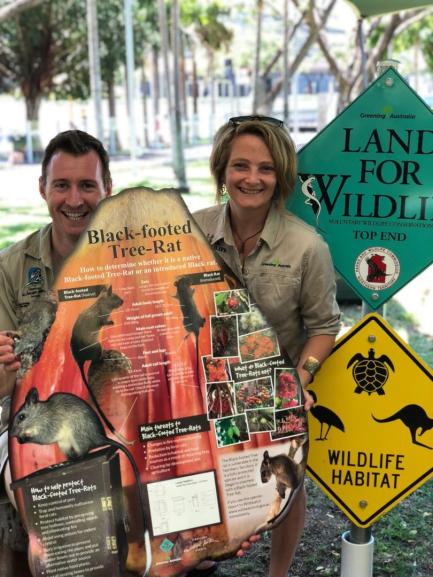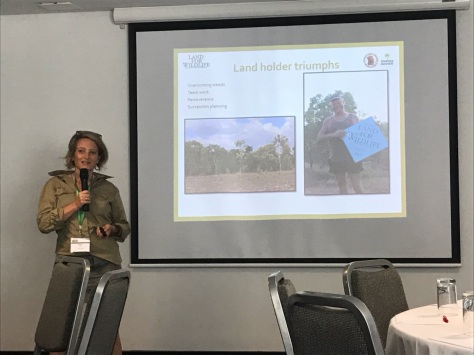On Saturday we displayed our new sign board at the Threatened Species Day at the Waterfront. This is a collaboration between the Territory Wildlife Park and Land for Wildlife Top End. The sign colorfully displays information about the beautiful Black-footed Tree-rat, how to help protect this threatened species and how to ID it and the differences between it and a black (feral) rat.
This outdoor sign will be displayed at the Territory Wildlife Park to give information to visitors and we are hoping to print more to be displayed in Land for Wildlife schools that engage in educational programs about local threatened species.

We are working on citizen science projects with landholders to collect data about presence of arboreal mammals and their nest box use, this is part of a process to promote the Black-footed Tree-rat awareness (and other native mammals) further into the community.

 Troy and Peter have been working on the 5 acre property in Leanyer over the last 2 years to restore it to native habitat, complete with beautifully landscaped paths using found rubble from the property. They also salvaged fill from construction sites and have planted over 500 plants. This hasn’t been easy and has involved a lot of hard work, removing vast amounts of Coffee bush, grassy weeds including Gamba and Mission Grass and concrete rubble; in fact many of the large native trees including beautiful Ghost gums and Milkwoods were only discovered on removal of the Coffee Bush.
Troy and Peter have been working on the 5 acre property in Leanyer over the last 2 years to restore it to native habitat, complete with beautifully landscaped paths using found rubble from the property. They also salvaged fill from construction sites and have planted over 500 plants. This hasn’t been easy and has involved a lot of hard work, removing vast amounts of Coffee bush, grassy weeds including Gamba and Mission Grass and concrete rubble; in fact many of the large native trees including beautiful Ghost gums and Milkwoods were only discovered on removal of the Coffee Bush.








 Land for Wildlife members Peter and Troy have been working hard to re-grow wildlife habitat on their 5 acre property in Leanyer.
Land for Wildlife members Peter and Troy have been working hard to re-grow wildlife habitat on their 5 acre property in Leanyer.












